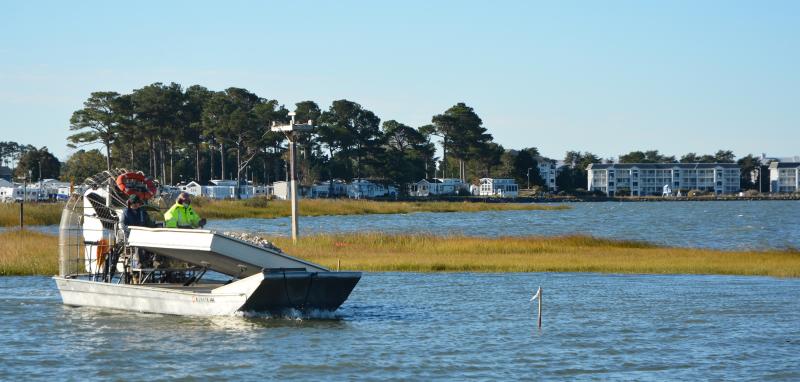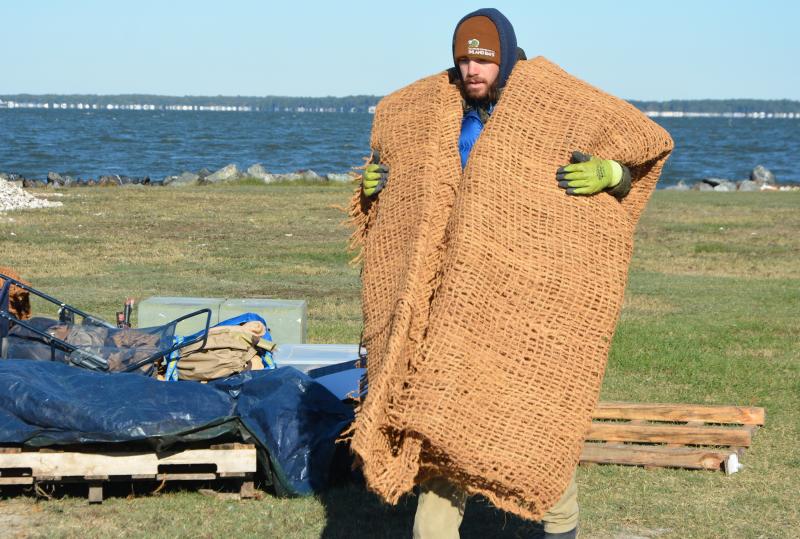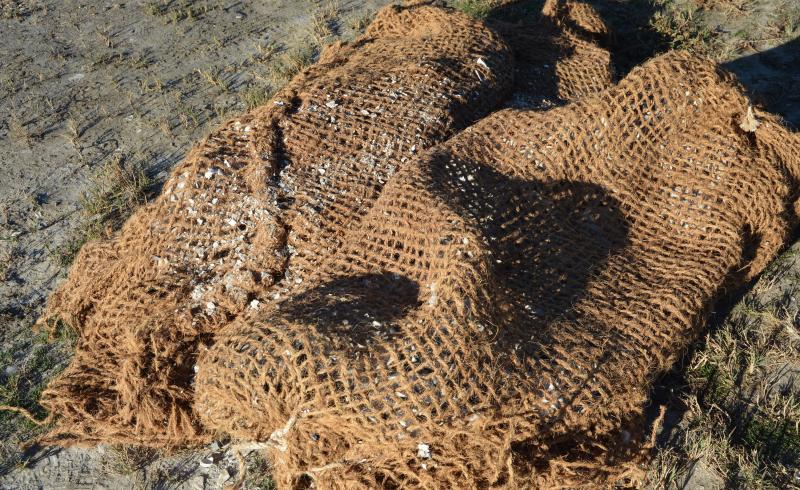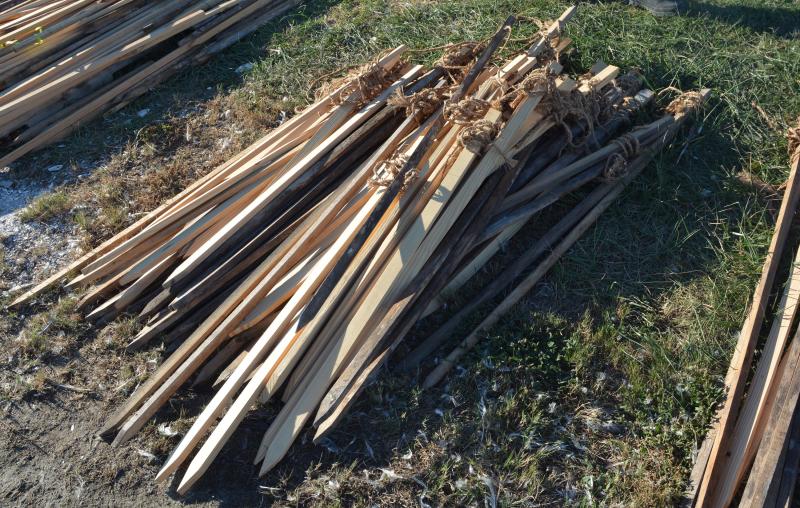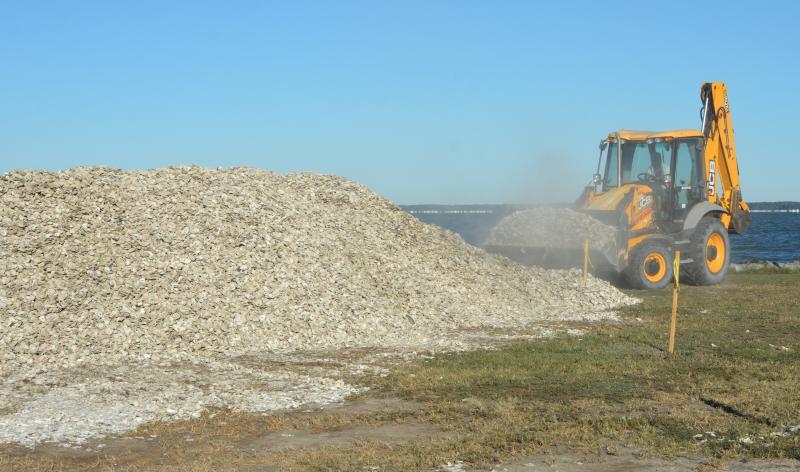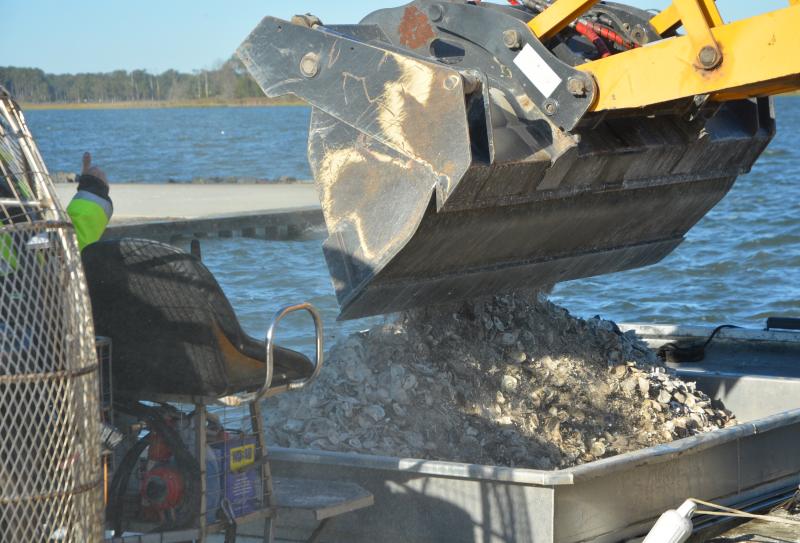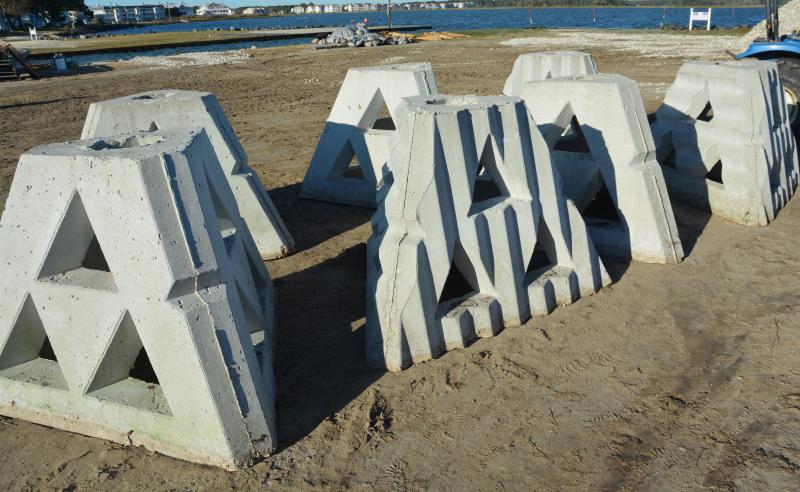CIB building Inland Bays’ largest oyster reef
In the name of finding a simple and effective way to grow oysters in the Inland Bays, the Center for the Inland Bays is in the process of building the largest oyster reef ever constructed within those bays.
Located near Pasture Point, the reef is just offshore of the James Farm Preserve in Ocean View. Center for the Inland Bays staff and volunteers have been working on the project for more than a week.
Center for the Inland Bays scientist technician Morgan Krell is overseeing the installation of the reef. He said the center will collect data for at least the next three years.
The reef is actually four different smaller reefs – a pile of shells only, a pile of shells with burrito bags (bags made from coconut fiber that have oyster shells in them) facing the bay, a pile of shells with the burrito bags arranged in pyramids facing the bay, and a pile of shells with wave attenuation devices and burrito bags facing the bay.
Each one of the burrito bags holds about three bushels of shells. CIB will be using 150 bags.
This is the simplest form of reef construction, Krell said, and the center will be seeing which style is most effective. If one of them is more successful than the others, it will be easier to scale up, he said.
There were 17 dump truck loads of oyster shells placed at the staging site in a development off Sandy Cove Road. The shells all came from CIB’s Don’t Chuck Your Shucks program.
The wave attenuation devices – large, pyramid-shaped structures made from concrete that have holes through them – aren’t all the same. Some are smooth. Some are corrugated.
They weigh about 2,200 pounds apiece, said Krell.
When construction is complete, CIB will cover the reef with oysters grown from its aquaculture lease area in Rehoboth Bay.
Morgan said the oysters aren’t big enough yet, but they will be in the next month or so.
